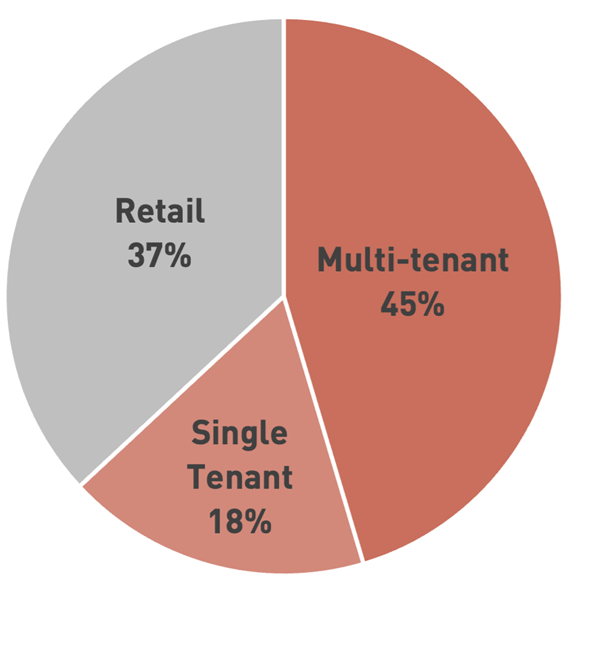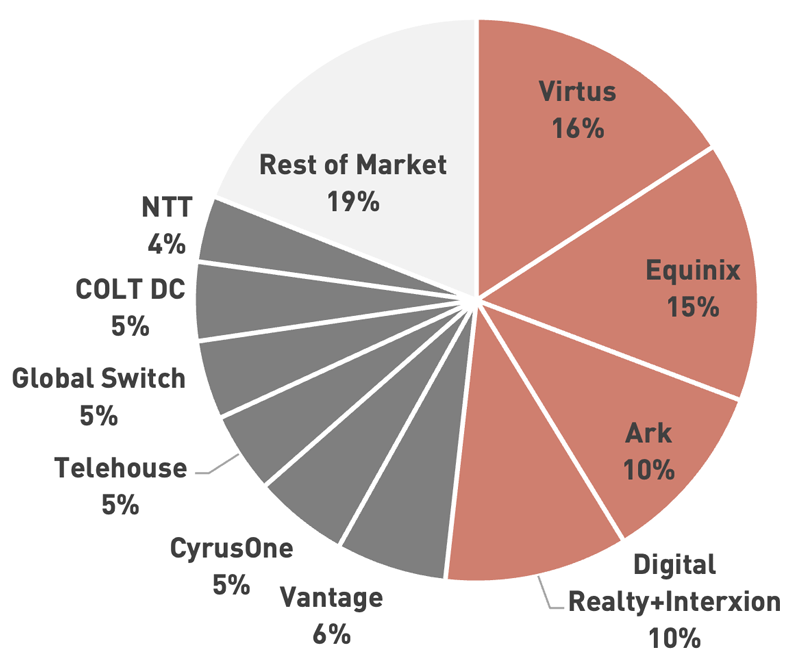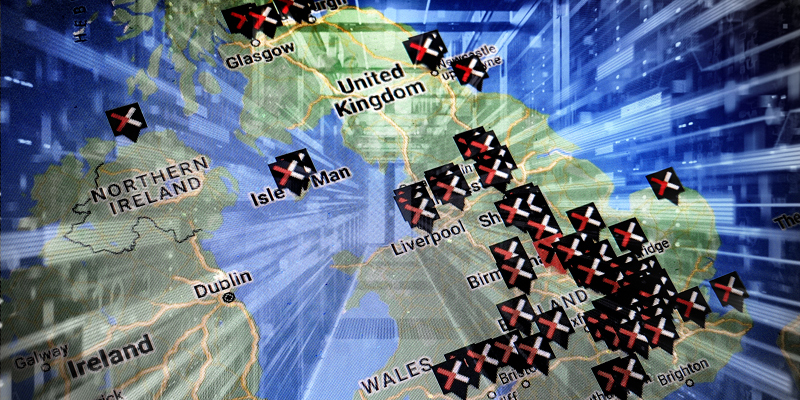 Further to recent updates to the Colo-X UK data centre database, Tim Anker shares his thoughts and perspectives on the changes he’s seen in the market over the past few years – especially following the surge in growth that’s taken place since the pandemic.
Further to recent updates to the Colo-X UK data centre database, Tim Anker shares his thoughts and perspectives on the changes he’s seen in the market over the past few years – especially following the surge in growth that’s taken place since the pandemic.
Today, the UK data centre market must appear complex if not intimidating – especially for the smaller end-users I specialise in helping. (These are typically people buying colocation racks, or even part-racks.) There are many new sites as well as many new names being attached to existing facilities following corporate activity, so this review aims to shed light on an ever-changing market.
Key takeaways
Summary of the overall UK data centre market: 4 operators = 50% of the capacity
The top-four data centre operators by capacity represent just over half of the entire UK market. These are market-leader Virtus along with Equinix, Ark and the recently combined Digital Realty/Interxion. Together they offer around 550MW from 43 facilities.
The next six operators by size provide around 30% of the market, roughly 320MW from 20 data centre facilities. These are Vantage, CyrusOne, Telehouse, Global Switch, Colt Data Centres and NTT GDC.
The remaining 20% of the market is provided by 38 operators, ranging from those with one site to those with as many as a dozen or so each. They have 80 sites in total, offering just over 200MW of capacity or around 2 million sq ft.
According to our estimates, the UK data centre market therefore comprises around 143 facilities and just over 1,000MW of capacity from just under 50 different operators.
Six of the top-10 UK operators in the Colo-X database are wholesale focussed, selling only large-scale capacity to large-scale buyers. And three of the top 10 – Equinix, Digital and NTT – offer both retail and wholesale. Only Telehouse in the top 10 is still largely focussed on the retail part of the market.
41 sites out of 140 sites in the UK market are wholesale, but they provide 650MW or 63% of market capacity. We classify the remaining 37% or 100 facilities as retail focussed. This is illustrated in the chart below, with the two red segments being wholesale capacity.
UK data centre market: wholesale vs retail
(Source: Colo-X Stats, March 2023)

The market split of wholesale vs retail continues towards a higher share of wholesale, with today’s 63% level contrasting with 54% wholesale and 46% retail as recently as March 2019.
Sixteen of the wholesale facilities on our database appear to be occupied by a single tenant. Single-tenant occupation seems to be an increasing trend: for example, eight of the 21 facilities added to our database since March 2021 are dedicated to single users. In fact, this is almost all the wholesale sites that have been added. And that suggests pretty much all new wholesale capacity is being built to order, almost certainly on behalf of the big three hyperscale buyers.
To further illustrate this trend, I was interested to read in Virtus’s annual report that in the year to December 2021 75% of their revenue came from three clients. There is no doubt to me that this percentage will be even higher for the year just ended. (Virtus is the largest data centre operator in the UK by capacity, according to our figures.)
A caveat…
I believe the Colo-X database to be accurate – but only up to a point. That’s because we can only use the information I can gather either directly myself in my day-to-day dealings with the various Colo-X vendor partners, or via research on the various operators’ websites. However, as I have seen several other estimations of market size that match ours (i.e. 1000MW or 1GW of capacity) I’m confident our figures must be close to the mark.
As I don’t usually deal in the wholesale sector, I am less close to its frontline than I am in the retail colocation market. And as wholesale sites are now increasingly large facilities, each site makes a big difference to the market overall. For example, if a wholesale operator was to build a 27MW facility for a large hyperscale user, it’s quite a guess as to whether that is being delivered in 3 x 9MW phases, and exactly when each of these is provisioned and handed over.
For clarification, I base my estimates on the situation at the end of March each year.
So, do these figures really matter?
Probably not to typical Colo-X customers, but 90% of the industry is now a private market between three buyers and 10 vendors.
The UK data centre market is now way past the supply crunch we saw in 2006 and 2007, so I don’t think these figures (while interesting of course) matter that much. At least not to the sort of smaller end-users I deal with at Colo-X.
Our largest transaction over the past couple of years has been 500kW, but more typically I help buyers looking for one rack, or even a half or a quarter rack. The challenge at this end of the market is to find vendors who are both good at servicing the needs of smaller clients and interested in doing so.
Fortunately, at Colo-X we have a superb range of retail-focussed partners. And quite a few of them offer retail-sized solutions out of wholesale sites that would otherwise be inaccessible for smaller users.
For example, over the past year we have put clients into DRT’s huge 40MW Woking campus, Global Switch’s 50MW London East building, and the smaller Virtus LON1 in Enfield. All of this has been made possible through our partners, and none of the operators would have offered the solutions our clients were looking for directly.
The London power crunch – again!
While there have been many headlines regarding the growth in data centre capacity, which my figures certainly support, there are also increasing concerns about the London market running out of power. This is especially the case in the West London availability zones centred on Slough and Hayes.
Yet I recall the talk of London running out of power began prior to the Olympics in 2012! Since then, we’ve had 11 years of huge expansion in the data centre market, so I tend to be a bit sceptical about such claims. It seems the market always finds a way to meet this challenge and continues to grow.
An example that suggests growth seems set to continue (at least for the foreseeable future) is Ark’s current construction of three new campuses in the West London market that could easily scale to 50MW each. Another example is CyrusOne, who are planning a 90MW scheme at Iver Heath, next to the M25/M40 junction.
However, it’s worth being aware that according to the specialist data centre team at CBRE, the three hyperscale buyers are consuming as much as 90% of all new capacity. Therefore, I feel to some degree the data centre market headlines are primarily reflecting what has become almost a private marketplace between these three buyers and perhaps 10 vendors.
What if hyperscale demand slows?
Perhaps more interesting for the UK data centre market overall is what will happen if hyperscale demand begins to slow. It’s worth remembering the pandemic in 2020 significantly increased cloud demand, in a way bringing forward demand that might have taken years to realise without the catalyst of lockdown. So, it must be reasonable to ask if this rate of growth will persist?
I also find it interesting to note that the NYSE FANG+ Index (an index that includes Facebook, Apple and Google) peaked at the end of 2021 and then spent all of 2022 declining from nearly 8,000 to almost 4,000 (a huge overall fall) before bouncing early this year. The stock market is certainly suggesting there is a change in the growth expectations for the largest technology companies.
Of course, other factors have also had an effect on the NYSE FANG+, rising interest rates in particular. But there has already been a significant round of layoffs from the tech sector this year, so perhaps the companies themselves are already making their own adjustments?
In terms of what the impact might be if hyperscale demand were to slow, if we look back a few years to the period prior to the Equinix/Telecity takeover of 2015, the slow wholesale sector was certainly one of the reasons the data centre market had become so competitive. This is because unsold wholesale capacity had become another source of supply for the retail sector.
This new capacity coincided with the launch of several new entrants including Volta, Datum and Everest (who all arrived in the market at the same time) along with the improved ability of the established operators to deliver new capacity. It therefore became a buyers’ market.
In my opinion, it was this tough market that initially led to the proposed merger between Telecity and Interxion. Since then, of course, the market has boomed, but there is no harm in remembering what has happened in the past!
It’s also important to acknowledge it was built-out wholesale capacity that was adding to the market’s supply mix (i.e. capacity that was built without a customer order – so-called ‘speculative build’). With build-to-order seemingly the focus of wholesale today, the industry may be better able to fine-tune capacity and avoid any such surplus stock. (I suppose, though, the emphasis should be on the word may!)
Countering this to some degree is the sheer volume of new operators keen to break into the wholesale market. This trend is partly driven by the huge amount of capital that is seeking to be deployed in digital infrastructure, as the ever-increasing number of infrastructure funds illustrates. I continue to watch the wholesale sector for this reason, even though its not my main day to day focus as mentioned.
The UK data centre market: breakdown by sector
From anaylsis of the Colo-X data centre database, we can make the following notes and observations:
Wholesale sector
Seven operators account for the bulk of wholesale capacity in the UK market, the biggest currently being Virtus. Ark has three huge campuses under construction and could easily double their existing capacity over the next few years.
Wholesale continues to dominate the UK data centre market – with single user sites the main focus since 2021
According to our database, six of the top-10 UK data centre operators are wholesale focussed, selling only large-scale capacity to large-scale buyers. Three of the top 10 – Equinix, Digital Realty and NTT – offer a mix of both retail and wholesale. Telehouse is the only operator in our top 10 still largely focussed on the retail part of the market.
Only 41 sites out of 140 sites in the UK market are wholesale, but they provide 650MW or 63% of market capacity. We classify the remaining 37% or 100 facilities as retail focussed. This is illustrated in the chart below, with the two red segments being wholesale capacity.
UK data centre market: top 10 and rest of market
(Source: Colo-X Stats, March 2023)

The market split of wholesale vs retail continues towards a higher share of wholesale, with today’s 63% level contrasting with 54% wholesale and 46% retail as recently as March 2019.
16 of the wholesale facilities on our database are occupied by a single tenant and this seems to be an increasing trend; for example, 8 of the 21 facilities that we’ve added to our database since March 2021 are dedicated to single users, in fact this is almost all of the wholesale sites added suggesting that pretty much all new wholesale capacity is being built to order for almost certainly, the big three hyperscale buyers.
Retail colocation sector
We classify 100 sites (offering a combined 380MW) as focussed on retail colocation, by which we mean they sell individual rack space to end-users. The largest of these sites is probably Equinix’s LD5 on the Slough Trading Estate.
Within the retail sector we see three types of provider:
| OPERATOR CLASSIFICATION | MAIN NAMES | SITES/TOTAL MW |
|---|---|---|
| Premium operators 28 sites/215MW |
Telehouse Equinix Digital Realty |
5/50 14/135 9/30 |
| Managed service providers 35 sites/73MW |
Pulsant Iomart Redcentric Node4 |
12/26 6/12 6/12 3/10 |
| Colocation 31 sites/62MW |
Proximity Volta Datavita Datum |
10/20 1/6 1/4 2/5 |
| TOTAL 94 sites/350MW |
The big three premium operators account for nearly 60% of retail capacity in the UK data centre market by MW. It’s worth pointing out we classify some Digital Realty sites in our wholesale categories. The same goes for some Equinix locations, such as their xScale sites.
Managed service providers tend to want to sell more than just colocation, but have been expanding by acquisition into the colocation market. For example the 2022 purchases by Redcentric of both Sungard’s UK data centre assets and 4D Data Centres, or Amito Reading being bought by Pulsant earlier that year.
Colocation operators largely only focus on space and power only. These include Datum, Datavita and Verne London (Volta), as well new entrants such as Proximity, who are focussed on the evolving ‘edge’ market, and have now acquired 10 sites outside of London in the UK regional market.
The retail colocation sector is growing – especially in the UK regional market
Despite the headline focus being largely on the wholesale part of the market, at the retail end there is also significant growth, in terms of operators, capacity and new locations.
These new locations are especially interesting for the UK regional market (the part of the market away from London and M25) and is very much as I forecasted in my 2021 report on this sector.
In fact, it’s interesting to see there are only a couple of new retail-focussed colocation sites in the London market. The most important of these is the new Telehouse South building, whereas all the other new retail data centres added to the Colo-X database since March 2020 are in the regional market.
Retail colocation capacity, especially in Manchester, is being boosted by Equinix’s huge MA5 and MA6 campus in Agecroft, to the north of the city centre. I visited the campus in May of 2022 as the first phase was being finalised for service. The first 6MW phase of MA5 went live at the end of 2022, and the two sites could offer around 25MW in total. It’s worth noting that if we ignore the two huge wholesale sites in the regional market (Vantage Newport and Ark Corsham), this equates to about 10% of the entire regional data centre market (228MW) or a staggering 24% of retail colocation capacity in the regional market (110MW).
Two additional edge-focussed operators will add to Proximity’s 10 regional sites, but it still feels like early days for true edge deployments overall.
In terms of the new locations for regional retail-focussed data centres, we’re seeing sites in cities such as Nottingham and Bristol for the first time from edge focussed-operator Proximity Data Centres. They now have 10 sites across the country, with around 20-25MW of capacity in total.
In addition, the recently formed AtlasEdge – a joint venture between Liberty Global (owner of Virgin Media in the UK), Digital Bridge and Digital Realty – now have their first UK data centre up and running in Leeds. This follows their acquisition of the site from Hardy Fisher in 2022. More AtlasEdge locations to are set to follow.
We will also soon be adding sites from the recently launched Asanti Data Centres, who have just acquired five data centres from Daisy Group, to launch themselves as a new ‘regional and edge data centre provider’. I sense the Asanti sites are relatively small, perhaps 300 racks or 1MW of IT load each. This suggests Asanti really are aiming for the specialist ‘edge’ market.
We’ve closed business with Proximity and are closing more business in the regional market in locations such as South Wales, Leeds and Manchester these days. About a third of enquiries I deal are now for the regional market). But I feel we’re only seeing very limited, genuine ‘edge’ or latency-sensitive so cases thus far.
Instead, enquiries for regional sites so far seem to be drive by more-general IT requirements from businesses local to the chosen data centre who are wanting a convenient location. I suspect we will need to see greater 5G roll out across the country before there is a more noticeable rise in the latency-sensitive use-cases that edge data centres are meant to be serving.
Summary of new retail colocation capacity on the Colo-X data centre database
We’ve added 21 facilities to the Colo-X data centre database since March 2020. Nine are wholesale and eight of those I expect to each be for single tenants, the exception being Equinix’s xScale LD11 site in Slough. I estimate these have added 91MW of existing capacity, with up to 150MW possible.
However, we’ve also added 12 retail-focussed facilities to our database, offering around 32MW of new capacity and able to support at least twice this as the sites are further fitted out. A table summarising the main new retail colocation capacity addtions to the Colo-X data base since 2020 is shown below.
| OPERATOR | SITES/CAPACITY | COMMENTS |
|---|---|---|
| Proximity Data Centres | 10 facilities/21MW | 8 facilities are new to the UK colocation market, 2 are acquisitions of existing sites |
| Telehouse South | 5MW now, 15MW possible | Former Reuters data centre -re-opened in March 2022 |
| Equinix MA5 | First phase 6MW opened Q4 2022 | MA6 next door to come, significant new capacity for UK Regional Market |
| AltasEdge | Leeds/4MW | Acquired former Hardy Fisher site, expanding site to 4MW from 2 |
Conclusion
We’re seeing big capacity increases in the UK data centre market, but this is being mostly driven by hyperscale buyers, as evidenced by the growth in single-user sites.
That aside, there is also significant growth in retail colocation – Colo-X’s main area of focus – in terms of locations, capacity and operators. Most of this growth is being seen in the UK regional market, away from London.
For the smaller end-users I work with at Colo-X (or perhaps anyone looking at the UK data centre market for the first time) the market can seem quite complex or even intimidating, so I hope this review helps to put things into perspective.
Besides the capacity changes that have been the focus of this review, we’ve also seen some massive colocation price changes over the past year. In fact, we have probably seen the biggest changes in pricing since the Telecity takeover of Redbus back in 2005. (I will write further on this in a separate article soon.)
We usually supply costs and information within 60 minutes during office hours.
